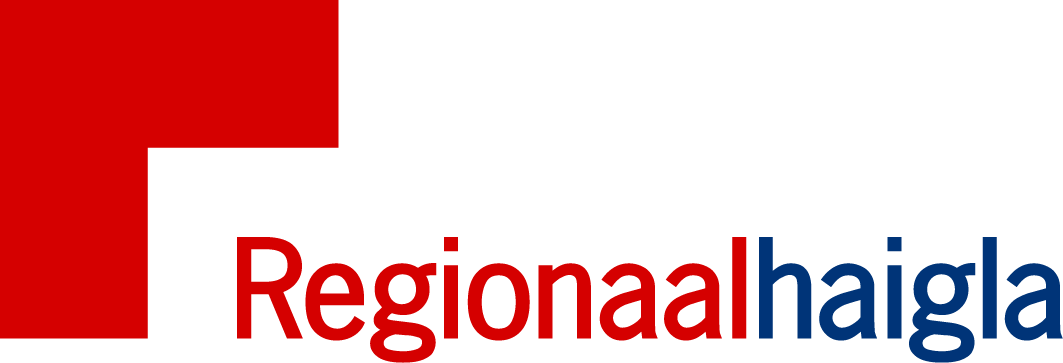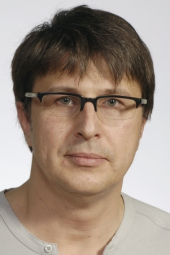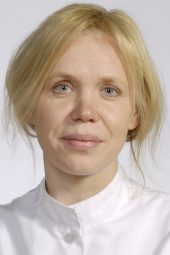The Anaesthesiology Clinic is located at the X-Block of the Mustamäe medical campus. With the opening of the X-Block in 2009, the North Estonia Medical Centre received one of the most modern operating facilities in the Baltic Sea region, including 18 operating rooms and a 24-bed recovery room; a patient-friendly emergency medical department meeting modern requirements; and three higher level intensive care departments with a total of 40 beds.
Anaesthesiology Centre
- Anaesthesia Department
- Anaesthesiology Polyclinic with pain relief cabinet
Intensive Care Centre
- Intensive Care Department I
- Intensive Care Department II
- Intensive Care Department III
- Barotherapy Unit
Emergency Medicine Centre
- Emergency Medicine Department
Ambulance Centre
- Ambulance Department, 12 crews at different support centres
- ALS Department with small island units
As of December 2019, the clinic has 156 doctors, 416 nurses, 229 caregivers and 9 secretaries.
In recent years there have been major developments at the Anaesthesiology Clinic.
Telemedicine solutions and the small islands project
In 2012, the so-called "small islands" project was initiated, wherein emergency aid crews were established on the islands of Vormsi, Kihnu and Ruhnu. First aid training was given to non-professional island residents who work in close co-operation with ALS crews on the mainland via telemedicine solutions.
In another update in 2014, the North Estonia Medical Centre plans to equip all ambulance crews with telemedicine solutions. Telemedicine solutions provide crews on call with 24-hour access to consultation with doctors from the North Estonia Medical Centre who can see the patient and health indicators by using the telemedicine technology (EKG, SatO2, blood pressure).
New Ambulance Centre
The Ambulance Centre was established at the Anaesthesiology Clinic in autumn 2013, as a result of reforms and an increase in the number of ambulance support centres. In addition to providing ambulance services, the centre is also responsible for training ambulance workers. Training for trauma treatment and resuscitation is regularly carried out at the ambulance centre. To ensure quality training, special classes have been developed for simulation exercises. The simulation classes should in time become a training base for workers of other centres as well.
Beginning in 2010, the ambulance workers have actively participated in international emergency medicine training and projects (European Championships in Emergency Medicine in Poland in 2010, in Poland and Lithuania in 2011, in Czech and Lithuania in 2012 and 2013). The Ambulance Centre has been a successful representative of the North Estonia Medical Centre as well as the whole of Estonia in these contests. Currently, the North Estonia Medical Centre's Ambulance Department is the only department in Estonia to have experience in the distinguished European Championships in Emergency Medicine.
With its nine support centres, the Ambulance Department covers western Harju County, Lääne County, Hiiumaa and the small islands (Vormsi, Kihnu and Ruhnu). There are up to 15,500 ambulance calls per year and patients are hospitalised in 40% of cases. The Ambulance Centre also includes two ALS crews that are responsible for assisting the regular ambulance crews when required. The ALS crews also transport patients in a critical condition from outside Tallinn's city limits, including airlifts by either plane or helicopter.
Modern anaesthesiology and intensive care centres
Anaesthesiologists are equipped with modern equipment and instruments, including 18 operating rooms in the Mustamäe block and 3 operating rooms in the day surgery department at Hiiu. The latter will be transferred to the soon-to-be-completed day surgery centre at the Mustamäe block in the coming years. The Anaesthesiology Department also comprises a 24-bed recovery room. The effectiveness of pain management on post-operation patients is monitored by our acute pain relief staff.
In 2001, our clinic opened an outpatient polyclinic for anaesthesiology with two cabinets. Anaesthesiological pre-operation consulting ensures that patients are informed and necessary tests are conducted before they come in for operation. This in turn reduces perioperative risks and patient stress. In connection with the transfer of the Hiiu block to Mustamäe in 2010, a chronic pain cabinet has been added to the polyclinic. The work of both cabinets is very intensive and the hospital development programme includes plans for expansion and improved conditions.
The three Intensive Care Departments together have 40 III-level beds available. Intensive Care Department II primarily treats patients with scheduled cardiothoracic, neuro and oncological surgery. Intensive Care Departments I and III are specialised on patients who have been hospitalised in emergency circumstances. Some of these patients have also previously undergone operation. The main patient conditions are various infectious diseases, sepsis, polytrauma e.g. neurotrauma, multiple organ dysfunction, intoxication, etc. Intensive Care Department III specialises in patients with burns who come from all over Estonia.
Due to their serious general condition, the intensive care patients often require long-term, complicated and expensive treatment: long-term ventilatory lung assistance, blood circulation support with external methods and apparatus (IABP, ECMO), kidney replacement treatment (continuous or intermittent haemofiltration and haemodialysis), intracranial pressure monitoring, controlled hypothermia implementation through the intravascular method.
Nurses have a major role in the intensive care departments. Unfortunately, the national training for nurses does not provide personnel with the necessary qualification and for that reason we actively co-ordinate additional training for nurses. A major issue of concern is that intensive care nurses have the highest rate of staff turnover from the country and profession.
Emergency medicine
Visitations at the Emergency Medicine Department have risen to over 80,000 per year, which is significantly higher than in other Estonian hospitals. The department includes a three-bed intensive care hall, a 16-bed monitoring hall and three isolation rooms. The patients are classified based on the seriousness of their condition (triage) as either red, yellow or green. Nearly 20% of the patients require hospital care. The Emergency Medicine Department has a great responsibility in the event of a large-scale accident or outbreak of disease. To increase our readiness for such an event, we regularly hold indoor and outdoor exercises.
During the clinic's operation
- one doctoral dissertation has been defended, by Dr. Inga Karu, previously Dr. Jens Narbekov
- the various boards of the Estonian Society of Anaesthesiologists have included Dr. Valdo Toome, Dr. Ülo Kivistik, Dr. Indrek Rätsep (current president) and Dr. Kristjan Kalling
- we have adopted heart and lung replacement treatment methods (LVAD, ECMO) and the clinic has joined international organ transplant organisations
- we have developed anaesthesiological treatment for HIPEC operations
- we have developed hypothermia treatment for patients requiring resuscitation and with brain trauma
- we have organised Siman simulator instructor training and courses
- we have participated in several international clinical studies including Euricus III, EuSOS, FENICE, Nutrition Day, Intensium, as well as in treatment studies such as Altana, Midex and others.
- we have participated in ambulance and ALS championships and exercises on the European level
The Anaesthesiology Clinic's Timeline of Directors:
Dr. Valdo Toome 1995–2002
Dr. Ülo Kivistik 2002–2006
Dr. Andrus Remmelgas 2006–2013
Dr. Valdo Toome 2013–2018
Dr. Sergei Kagalo since 2018– ...
History
The Anaesthesiology Clinic was founded at the Mustamäe Hospital in 1995. At the time, it consisted of a cardio-anaesthesiology and post-operative intensive care department, a general anaesthesiology department and an intensive care department including an ALS service and a barochamber.
The clinic's early years had an important impact on the development of the entire field; TISS and APACHE II scores were adopted; we actively participated in creating the Health Insurance Fund's price list. In co-operation with the management of the Estonian Society of Anaesthesiologists and the Ministry of Social Affairs, we created development programmes and job requirements corresponding to the various types of hospitals. In 1999, we joined Finland's intensive care departments' quality analysis Intensium.
We began training residents, initially in the field of cardio-anaesthesiology. In the first years, the main engines of the development of the clinic were Dr Ülo Kivistik and Dr. Indrek Rätsep, Dr. Kalle Paju; the clinic's senior nurses Ingrid Susi and Ülle Ilves; and many others who have since become senior doctors, managers of the centres and departments and senior nurses. In addition, contributions to the development of the clinic were made by former hospital directors Dr. T. Lainevee, Dr. A. Talihärm and R. Allikvee. It deserves mention in its own right that Docent A. Kivik, a founder of Estonian anaesthesiology, worked at our clinic. We gradually began participating in international clinical ( Euricus III) and treatment studies (Altana etc.). The constant updating and improving of equipment was also important. We adopted autotransfusion with the aid of Cell Saver, continuous hemodialysis, anaesthesia depth monitoring (BIS), and we acquired an ECMO machine. Invasive patient monitoring was expanded and regional anaesthesia methods were developed.
A broader development of training began with intensive care nurses. By the turn of the century, the first international contacts emerged, primarily with specialists in Finland and other Scandinavian countries, as well as with centres in the UK and France. Through the George Soros Fund, it was possible to attend courses in Central Europe; we also used stipends from the Baltic-German doctors society.





